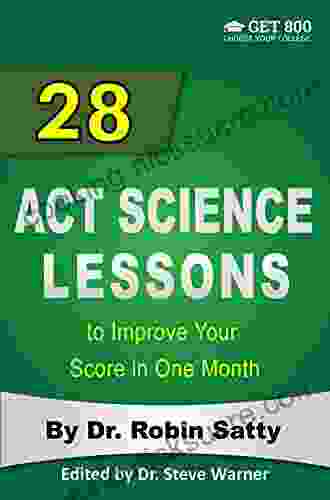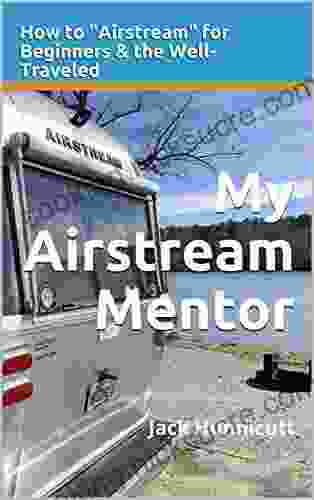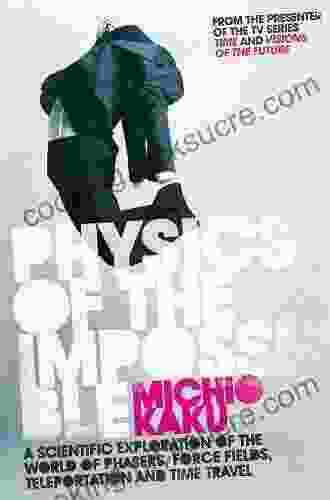28 ACT Science Lessons To Improve Your Score In One Month

Science education is a critical component of modern learning, shaping our understanding of the world around us and unlocking the potential for innovation and problem-solving. To achieve optimal results in science, a systematic approach is essential. This comprehensive article provides a collection of 28 captivating science lessons designed to enhance your knowledge and skills within a month. Each lesson includes a detailed description, relevance to real-world applications, captivating activities, and valuable resources to facilitate your learning journey. By embracing the insights and applying the techniques presented in these lessons, you will elevate your understanding of science, boost your confidence, and maximize your potential for success.
Lesson 1: The Scientific Method
Description:Embark on the cornerstone of scientific inquiry by exploring the scientific method. Learn the fundamental steps of observation, hypothesis formation, experimentation, data analysis, and drawing, which serve as the foundation for scientific discovery.
Relevance:The scientific method provides a structured approach to solving problems and testing ideas, applicable in diverse fields from medicine to engineering and essential for critical thinking and evidence-based decision-making.
4.4 out of 5
| Language | : | English |
| File size | : | 21936 KB |
| Screen Reader | : | Supported |
| Print length | : | 231 pages |
| Lending | : | Enabled |
Activity:Conduct a hands-on experiment to test the effect of different variables on plant growth. Observe, hypothesize, and draw s based on your findings.
Resource:The Scientific Method: A Step-by-Step Guide: https://www.sciencebuddies.org/science-fair-projects/science-fair/steps-of-the-scientific-method
Lesson 2: Physics: Motion and Forces
Description:Explore the fundamental principles of motion and forces. Understand the concepts of velocity, acceleration, inertia, and Newton's Laws of Motion.
Relevance:Physics of motion is essential for comprehending how objects move in the world around us, from the trajectory of a thrown ball to the mechanics of a rocket launch.
Activity:Build a simple pendulum and investigate the relationship between its length and period of oscillation.
Resource:Motion and Forces: An Interactive Tutorial: https://phet.colorado.edu/sims/html/forces-and-motion-basics/latest/forces-and-motion-basics_en.html
Lesson 3: Chemistry: The Periodic Table
Description:Unravel the mysteries of the periodic table. Learn the organization of elements, their properties, and their role in chemical reactions.
Relevance:The periodic table serves as a roadmap for understanding the behavior and reactivity of elements, crucial for fields ranging from materials science to medicine.
Activity:Create a model of the periodic table using everyday objects and explore the trends in element properties.
Resource:Interactive Periodic Table: https://www.rsc.org/periodic-table/
Lesson 4: Biology: Cell Structure and Function
Description:Delve into the fundamental building blocks of life: cells. Study the structure and function of cell organelles, including the nucleus, mitochondria, and endoplasmic reticulum.
Relevance:Understanding cell biology is essential for unraveling the complexities of living organisms, from disease mechanisms to biotechnological advancements.
Activity:Examine plant or animal cells under a microscope and identify their different components.
Resource:Cell Structure and Function: An Animated Overview: https://www.khanacademy.org/science/ap-biology/cell-structure-and-function/plasma-membranes/a/structure-of-a-eukaryotic-cell
Lesson 5: Ecology: Ecosystems and Biodiversity
Description:Explore the intricate relationships within natural ecosystems. Understand the concept of biodiversity and its importance for ecosystem stability and human well-being.
Relevance:Ecology provides insights into the challenges and opportunities associated with environmental conservation, sustainable development, and climate change mitigation.
Activity:Visit a local ecosystem (e.g., forest, lake, park) and observe the interactions between organisms and their environment.
Resource:Ecosystems and Biodiversity: A National Geographic Education Resource: https://www.nationalgeographic.org/encyclopedia/ecosystem/
Lesson 6: Geology: Plate Tectonics
Description:Unravel the dynamic forces that shape our planet. Learn about plate tectonics, earthquakes, and volcanoes and their impact on geological formations and human history.
Relevance:Geology plays a crucial role in understanding natural hazards, resource exploration, and the long-term evolution of the Earth's surface.
Activity:Create a model of plate tectonics using cardboard and markers, demonstrating the movement and interaction of plates.
Resource:Plate Tectonics: An Interactive Simulation: https://www.pbslearningmedia.org/resource/ess05.sci.ess.earthsys.platetectonics/plate-tectonics-simulation/
Lesson 7: Astronomy: The Solar System
Description:Journey beyond Earth into the vast expanse of space. Explore the planets, moons, and other celestial bodies within our solar system.
Relevance:Astronomy expands our understanding of the universe, inspires scientific curiosity, and provides insights into our place in the cosmos.
Activity:Build a model of the solar system using Styrofoam balls and skewers, demonstrating the relative sizes and distances between planets.
Resource:NASA Solar System Exploration: https://solarsystem.nasa.gov/
Lesson 8: Physics: Energy and Power
Description:Uncover the principles of energy and power. Explore different forms of energy, including potential, kinetic, and thermal energy, and learn how they are converted and utilized.
Relevance:Understanding energy and power is crucial for technological advancements, from renewable energy sources to energy-efficient devices.
Activity:Investigate the conversion of potential energy into kinetic energy using a pendulum or roller coaster model.
Resource:Energy and Power: An Interactive Tutorial: https://phet.colorado.edu/sims/html/energy-forms-and-changes/latest/energy-forms-and-changes_en.html
Lesson 9: Chemistry: Chemical Reactions and Stoichiometry
Description:delve into the fascinating world of chemical reactions. Learn about the principles of stoichiometry, balancing chemical equations, and predicting the products of reactions.
Relevance:Chemical reactions play a fundamental role in industrial processes, medicine, and everyday life, providing the basis for countless products and technologies.
Activity:Conduct a simple chemical reaction, such as acid-base neutralization or combustion, and observe the changes that take place.
Resource:Chemical Reactions and Stoichiometry: A Step-by-Step Guide: https://www.khanacademy.org/science/chemistry/chemical-reactions/stoichiometry/a/stoichiometry
Lesson 10: Biology: Genetics and Heredity
Description:Discover the principles of genetics and heredity, including Mendelian inheritance and DNA structure. Learn how traits are passed down from one generation to the next.
Relevance:Genetics provides the foundation for advancements in medicine, agriculture, and biotechnology, helping us understand the complexities of life and heredity.
Activity:Simulate Mendelian inheritance using coins or beans, demonstrating the principles of dominant and recessive alleles.
Resource:Genetics and Heredity: An Animated : https://www.khanacademy.org/science/ap-biology/intro-to-heredity/intro-to-heredity/v/intro-to-heredity
Lesson 11: Ecology: Population Ecology
Description:Study the dynamics of populations, including population growth, carrying capacity, and factors that influence population size.
Relevance:Population ecology is essential for wildlife management, conservation biology, and understanding the impact of human activities on ecosystems.
Activity:Create a graph of population growth using real-world data, exploring the factors that influence population size changes.
Resource:Population Ecology: A National Geographic Education Resource: https://www.nationalgeographic.org/encyclopedia/population-ecology/
Lesson 12: Geology: Rocks and Minerals
Description:Explore the composition and properties of rocks and minerals. Learn how they form, classify, and their significance in the Earth's history.
Relevance:Geology of rocks and minerals provides insights into the formation of our planet, the extraction of valuable resources, and the construction of infrastructure.
Activity:Collect and identify different types of rocks and minerals, studying their physical properties and geological origins.
Resource:Rocks and Minerals: An Interactive Guide: https://www.americangeosciences.org/education/rocks-minerals
Lesson 13: Astronomy: Stars and Stellar Evolution
Description:Uncover the life cycle of stars, from their birth to their ultimate fate. Study the properties of different star types, including black holes and neutron stars.
Relevance:Astronomy of stars and stellar evolution provides insights into the formation and evolution of galaxies, the search for extraterrestrial life, and the origin of heavy elements in the universe.
Activity:Create a diagram of the Hertzsprung-Russell diagram, representing the relationship between stellar temperature and luminosity.
Resource:Stars and Stellar Evolution: A NASA Education Resource: https://imagine.gsfc.nasa.gov/stars/
Lesson 14: Physics: Waves and Optics
Description:Explore the fascinating world of waves and optics. Understand the properties of sound waves, light waves, and electromagnetic radiation.
Relevance:Physics of waves and optics has applications in fields such as telecommunications, imaging technologies, and medical diagnostics.
Activity:Conduct an experiment to demonstrate the interference and
4.4 out of 5
| Language | : | English |
| File size | : | 21936 KB |
| Screen Reader | : | Supported |
| Print length | : | 231 pages |
| Lending | : | Enabled |
Do you want to contribute by writing guest posts on this blog?
Please contact us and send us a resume of previous articles that you have written.
 Fiction
Fiction Non Fiction
Non Fiction Romance
Romance Mystery
Mystery Thriller
Thriller SciFi
SciFi Fantasy
Fantasy Horror
Horror Biography
Biography Selfhelp
Selfhelp Business
Business History
History Classics
Classics Poetry
Poetry Childrens
Childrens Young Adult
Young Adult Educational
Educational Cooking
Cooking Travel
Travel Lifestyle
Lifestyle Spirituality
Spirituality Health
Health Fitness
Fitness Technology
Technology Science
Science Arts
Arts Crafts
Crafts DIY
DIY Gardening
Gardening Petcare
Petcare Marcus A Pfeiffer
Marcus A Pfeiffer W J Hendry
W J Hendry 18th Edition Kindle Edition
18th Edition Kindle Edition Robert Jay Lifton
Robert Jay Lifton David Abram
David Abram Meiso
Meiso David Alloway
David Alloway Jim Apfelbaum
Jim Apfelbaum Andrew Doughty
Andrew Doughty Jen Calonita
Jen Calonita C B Lee
C B Lee V E Schwab
V E Schwab Julie Miller
Julie Miller Sue Fierston
Sue Fierston Joseph Terry
Joseph Terry Tony Herman
Tony Herman Victoria Allman
Victoria Allman Michio Kaku
Michio Kaku Jay Annelli
Jay Annelli 24th Edition Kindle Edition
24th Edition Kindle Edition Wildlife Trusts
Wildlife Trusts Bridget Portmann
Bridget Portmann Joey Miller Msw Lcsw
Joey Miller Msw Lcsw Thomas S Kuhn
Thomas S Kuhn William Ritter
William Ritter Prasad Raju V V N R Pathapati
Prasad Raju V V N R Pathapati Robert H Miller
Robert H Miller Tod Schimelpfenig
Tod Schimelpfenig Frances Evesham
Frances Evesham Gary Thomas
Gary Thomas Ricky Moore
Ricky Moore Steve Sheinkin
Steve Sheinkin Leigh Bardugo
Leigh Bardugo Pat Wray
Pat Wray Peter Scazzero
Peter Scazzero Rob Summers
Rob Summers Sara Manning Peskin
Sara Manning Peskin Whitney Nelson
Whitney Nelson Donald S Murray
Donald S Murray Marcus Felson
Marcus Felson James Rebanks
James Rebanks Dot Edu
Dot Edu Andrew Greiner
Andrew Greiner Leslie Sokol
Leslie Sokol Candace Clark Trinchieri
Candace Clark Trinchieri Peter Mcbride
Peter Mcbride Lauren Daniels
Lauren Daniels Benedict Carey
Benedict Carey Bonita Norris
Bonita Norris Steve Bisheff
Steve Bisheff Steve Caplin
Steve Caplin Nancy Mcwilliams
Nancy Mcwilliams Rick Heard
Rick Heard M D Johnson
M D Johnson Nick Marshall
Nick Marshall Jon Gillespie Brown
Jon Gillespie Brown Robin Satty
Robin Satty Robin Ha
Robin Ha Jefferson Hawkins
Jefferson Hawkins Mark Hume
Mark Hume Samantha Rodman
Samantha Rodman Jason Louv
Jason Louv Riley Black
Riley Black David Borgenicht
David Borgenicht Catherine Montgomery
Catherine Montgomery Kerri Andrews
Kerri Andrews Andrea Hudy
Andrea Hudy Gillian Tett
Gillian Tett Jay Greeson
Jay Greeson James Branch Cabell
James Branch Cabell Stephanie Cacioppo
Stephanie Cacioppo Mark Mcconville
Mark Mcconville Wolfgang Hohlbein
Wolfgang Hohlbein Tracy Townsend
Tracy Townsend Joelle Charbonneau
Joelle Charbonneau Laura Domino
Laura Domino Thomas Watson
Thomas Watson Rick Westhead
Rick Westhead James Geary
James Geary Rashers Tierney
Rashers Tierney Frans De Waal
Frans De Waal Isabel Sterling
Isabel Sterling Dr Gabriel Peter Salgo
Dr Gabriel Peter Salgo Galen Wolf
Galen Wolf Matt Fulks
Matt Fulks Jenn Brandt
Jenn Brandt Tamara Ireland Stone
Tamara Ireland Stone Jack Hunnicutt
Jack Hunnicutt Hugh Raffles
Hugh Raffles Ivan Pastine
Ivan Pastine Guillermo Ferrara
Guillermo Ferrara Marta Szabo
Marta Szabo Nick Peters
Nick Peters Serena Valentino
Serena Valentino E K Johnston
E K Johnston Lucia Ashta
Lucia Ashta Andrea Curtis
Andrea Curtis Katharine B Soper
Katharine B Soper Luigi Gabriele Conti
Luigi Gabriele Conti Dani Jacobs
Dani Jacobs Patrick Mouratoglou
Patrick Mouratoglou Jed Z Buchwald
Jed Z Buchwald Gabby Rivera
Gabby Rivera Malinda Lo
Malinda Lo Greg Ruth
Greg Ruth Kelly Oliver
Kelly Oliver Big Daddy Ozone
Big Daddy Ozone Kathryne Kennedy
Kathryne Kennedy Francesca Zappia
Francesca Zappia Paulette F C Steeves
Paulette F C Steeves Baz Thompson
Baz Thompson Gregory Curtis
Gregory Curtis Brock Eide
Brock Eide Andrea Cataldo
Andrea Cataldo James Lyons Weiler
James Lyons Weiler Paul Kalas
Paul Kalas Sandy Stott
Sandy Stott Steven H Weintraub
Steven H Weintraub Mandy Baggot
Mandy Baggot Future Publishing
Future Publishing Anna Holmwood
Anna Holmwood Rachel Atwood
Rachel Atwood Sorin Dumitrascu
Sorin Dumitrascu Deaver Brown
Deaver Brown Hasok Chang
Hasok Chang Sudhir Shirwadkar
Sudhir Shirwadkar Jeff Davis
Jeff Davis Lars Muhl
Lars Muhl Peter Boardman
Peter Boardman Bernard Moitessier
Bernard Moitessier Oliver Perkins
Oliver Perkins Gerald A Moore Sr
Gerald A Moore Sr L Michele Issel
L Michele Issel Kailin Gow
Kailin Gow Kelly Tyler Lewis
Kelly Tyler Lewis Jennifer Anne Davis
Jennifer Anne Davis Robert Sky Allen Ph D
Robert Sky Allen Ph D Margaret Thorsborne
Margaret Thorsborne Jacqueline Edmondson
Jacqueline Edmondson Joseph Ledoux
Joseph Ledoux Vertamae Smart Grosvenor
Vertamae Smart Grosvenor Doug Swisher
Doug Swisher Adam Mansbach
Adam Mansbach Andrew Goliszek
Andrew Goliszek Dana Mccullough
Dana Mccullough Michele Leathers
Michele Leathers Maria Konnikova
Maria Konnikova Bob Mayer
Bob Mayer Sheila Jasanoff
Sheila Jasanoff Andrej Spec
Andrej Spec Tom Lecompte
Tom Lecompte Kenneth S Shultz
Kenneth S Shultz Carmen Micsa
Carmen Micsa George E P Box
George E P Box Thomas Meyer
Thomas Meyer Marvin L Bittinger
Marvin L Bittinger Morihei Ueshiba
Morihei Ueshiba Bernard A Chavis
Bernard A Chavis Mary Keith Piasecki
Mary Keith Piasecki Course Hero
Course Hero Jakub Marian
Jakub Marian Michael S Malone
Michael S Malone Mara Vorhees
Mara Vorhees Charlotte Elkins
Charlotte Elkins Tim Ryan
Tim Ryan Neil Oliver
Neil Oliver Chris Salisbury
Chris Salisbury Michael T Nygard
Michael T Nygard Karen Robson
Karen Robson Jordan Romero
Jordan Romero Sandra Glosser
Sandra Glosser Kirby Arnold
Kirby Arnold Lilith Starr
Lilith Starr George Hospodar
George Hospodar Rachael Chapman
Rachael Chapman Denise Riebe
Denise Riebe Raymond E Feist
Raymond E Feist John Morton
John Morton Sameera Khan Rd Pa C
Sameera Khan Rd Pa C Claire Maxted
Claire Maxted Steven M Fiser
Steven M Fiser Elizabeth Clor
Elizabeth Clor Rachel Meltzer Warren
Rachel Meltzer Warren Robyn Sheldon
Robyn Sheldon Ruby Walker
Ruby Walker Stephen Wiggins
Stephen Wiggins Erich Neumann
Erich Neumann Daniel Humm
Daniel Humm Chris Mcmullen
Chris Mcmullen Richard P Feynman
Richard P Feynman Dorothy Pang
Dorothy Pang Chris Lilly
Chris Lilly Julie Powers
Julie Powers Elizabeth S Meckes
Elizabeth S Meckes Elizabeth Marshall Thomas
Elizabeth Marshall Thomas Michael Hermann
Michael Hermann Tillie Walden
Tillie Walden Martin Rooney
Martin Rooney James Fox
James Fox Ronald D Davis
Ronald D Davis Ewen Levick
Ewen Levick Nikola Tesla
Nikola Tesla Kathleen Dean Moore
Kathleen Dean Moore Hayley Campbell
Hayley Campbell Patsy M Lightbown
Patsy M Lightbown Gwendolyn Griffith Lieuallen
Gwendolyn Griffith Lieuallen Ken Blanchard
Ken Blanchard Jim Shea
Jim Shea John Bantin
John Bantin James Dodson
James Dodson Kristen Thone
Kristen Thone Joe Cavallaro
Joe Cavallaro Andrew St Pierre White
Andrew St Pierre White Andy Bull
Andy Bull J David Logan
J David Logan Sarah Castille
Sarah Castille Terence Callery
Terence Callery Richard N Aufmann
Richard N Aufmann Hampton Sides
Hampton Sides Gemma Rogers
Gemma Rogers Dylan Norton
Dylan Norton Jonathan Clements
Jonathan Clements Kindra Gordon
Kindra Gordon Gaurav Suri
Gaurav Suri Bruce D Perry
Bruce D Perry Andrea Gonzales
Andrea Gonzales Andre Watson
Andre Watson Noel Janis Norton
Noel Janis Norton Brad Schoenfeld
Brad Schoenfeld Jack Purdum
Jack Purdum Richard Munson
Richard Munson Kjartan Poskitt
Kjartan Poskitt Craig Custance
Craig Custance Gabrielle Coleman
Gabrielle Coleman Jennifer Blair
Jennifer Blair Andrea Cremer
Andrea Cremer Luke Rosiak
Luke Rosiak Ben Orlin
Ben Orlin Tom Siegfried
Tom Siegfried Anne Bogel
Anne Bogel Loren Pope
Loren Pope Greg Presto
Greg Presto Jonathan Cummings
Jonathan Cummings Brian Azzarello
Brian Azzarello Kiersten White
Kiersten White Buster Benson
Buster Benson Andrea Flores
Andrea Flores Lisa Bond
Lisa Bond Richard Bolstad
Richard Bolstad Aldous Huxley
Aldous Huxley Emily Henry
Emily Henry Lynne L Finch
Lynne L Finch Trish Allison
Trish Allison Ryan Pellett
Ryan Pellett Rupert Sheldrake
Rupert Sheldrake Brenda Reed Pilcher
Brenda Reed Pilcher Bruce Mcnall
Bruce Mcnall John Ramirez
John Ramirez Peter David
Peter David Mary Jane Sterling
Mary Jane Sterling Jenny Mackay
Jenny Mackay Charles H Hapgood
Charles H Hapgood Patrick Hatt
Patrick Hatt Christopher Sommer
Christopher Sommer Marissa Meyer
Marissa Meyer Ken Gullette
Ken Gullette Bernard Craw
Bernard Craw Elizabeth S Trafalgar
Elizabeth S Trafalgar Metin Bektas
Metin Bektas Susanna Kearsley
Susanna Kearsley Shane Ryan
Shane Ryan Harriet Brown
Harriet Brown Lori Shandle Fox
Lori Shandle Fox Catie Czora
Catie Czora Kelsie Stelting
Kelsie Stelting Jeremy Freese
Jeremy Freese Rich Luhr
Rich Luhr Mike Cyra
Mike Cyra Connie J Wells
Connie J Wells Necoco
Necoco C L Werner
C L Werner Annette Curtis Klause
Annette Curtis Klause Rizwan Virk
Rizwan Virk Melissa Caughey
Melissa Caughey Stephen Chbosky
Stephen Chbosky Lonely Planet
Lonely Planet Bill O Neill
Bill O Neill Mike Gauthier
Mike Gauthier Rolf Potts
Rolf Potts Timothy Johnson
Timothy Johnson Garcilaso De La Vega
Garcilaso De La Vega Rajani Katta
Rajani Katta Paul Abell
Paul Abell George Christian Pappas
George Christian Pappas Ralph Zuranski
Ralph Zuranski Steven J Matthiesen
Steven J Matthiesen Susan Williams White
Susan Williams White Andrew Gelman
Andrew Gelman James Turnbull
James Turnbull Andrew Blauner
Andrew Blauner William F Sensakovic
William F Sensakovic James A Middleton
James A Middleton Michael Judge
Michael Judge Wendy Heard
Wendy Heard Mark M Meerschaert
Mark M Meerschaert Sean Pidgeon
Sean Pidgeon D Harvey
D Harvey Chiara Marletto
Chiara Marletto Kevin Cook
Kevin Cook Usa Pickleball Association
Usa Pickleball Association Caren Van Slyke
Caren Van Slyke Leslie Morgan Steiner
Leslie Morgan Steiner Pietro Matracchi
Pietro Matracchi Robert B Yonaitis
Robert B Yonaitis Cliff Wilson
Cliff Wilson Christina Kim
Christina Kim Erica Hoke
Erica Hoke Mason Deaver
Mason Deaver Arous Brocken
Arous Brocken Robin Mamlet
Robin Mamlet Donna Bollinger
Donna Bollinger Barbara Merry
Barbara Merry Leslie Vedder
Leslie Vedder Namina Forna
Namina Forna Cathal Armstrong
Cathal Armstrong Mike Davenport
Mike Davenport Brandon Mull
Brandon Mull Steven Johnson
Steven Johnson Stacey Little
Stacey Little Stephan J Guyenet
Stephan J Guyenet Bruce Bowlen
Bruce Bowlen Andrea Wachter
Andrea Wachter James R Morrow Jr
James R Morrow Jr Joe Wells
Joe Wells Andrea Bemis
Andrea Bemis Will Thornton
Will Thornton Roger Atwood
Roger Atwood Jason Welker
Jason Welker George Mahood
George Mahood Ian O Connor
Ian O Connor Jennifer L Armentrout
Jennifer L Armentrout Rob Taylor
Rob Taylor Joseph Luzzi
Joseph Luzzi Arianna Astuni
Arianna Astuni Roland Martin
Roland Martin Jason Zemcik
Jason Zemcik Anne Holler
Anne Holler Steve Anthony Tallon
Steve Anthony Tallon Rita Jablonski
Rita Jablonski Ronald J Harshbarger
Ronald J Harshbarger Richard Bellman
Richard Bellman Bettina Bonifatti
Bettina Bonifatti J E Lendon
J E Lendon Kyle Keegan
Kyle Keegan Jenna Miscavige Hill
Jenna Miscavige Hill Geoffrey Wolff
Geoffrey Wolff Bisco Hatori
Bisco Hatori Janet Wolanin Alexander
Janet Wolanin Alexander Laurie Ann Thompson
Laurie Ann Thompson Laura Lincoln Maitland
Laura Lincoln Maitland Ann Gadzikowski
Ann Gadzikowski Jimmy Elliott
Jimmy Elliott Kylie Lee Baker
Kylie Lee Baker Andrew Beyer
Andrew Beyer John Gilbert
John Gilbert Roberto Pedreira
Roberto Pedreira James Mallory
James Mallory Paul Stamets
Paul Stamets Clayton Everline
Clayton Everline Vin T Sparano
Vin T Sparano Walter Greiner
Walter Greiner Stuart L Kaplan M D
Stuart L Kaplan M D Seth Reichelson
Seth Reichelson David Montgomery
David Montgomery Eric Engle
Eric Engle Ola Ola
Ola Ola April Vahle Hamel
April Vahle Hamel Florent Buisson
Florent Buisson Michael Anderle
Michael Anderle Zak Mt Standridge
Zak Mt Standridge Arlo Adams
Arlo Adams Thomas Berger
Thomas Berger Mara Rockliff
Mara Rockliff Leisy J Abrego
Leisy J Abrego Bhavesh Mamtani
Bhavesh Mamtani A J Carlisle
A J Carlisle Daniel P Murphy
Daniel P Murphy Christos Lynteris
Christos Lynteris Melissa Reynolds
Melissa Reynolds Marta Obiols Llistar
Marta Obiols Llistar Nathaniel Philbrick
Nathaniel Philbrick Romney Steele
Romney Steele Anne Marie Meyer
Anne Marie Meyer S Fatou
S Fatou Becky Lomax
Becky Lomax Ian Tattersall
Ian Tattersall Christine Balaz
Christine Balaz Sunny Anderson
Sunny Anderson Karen Tranberg Hansen
Karen Tranberg Hansen Jessica Mccrory Calarco
Jessica Mccrory Calarco Andrea Olson
Andrea Olson Nic Oatridge
Nic Oatridge Rachel Hawkins
Rachel Hawkins Jim Curran
Jim Curran Charles Szypszak
Charles Szypszak Suzy Ashworth
Suzy Ashworth Giada De Laurentiis
Giada De Laurentiis Robert Hamill
Robert Hamill Andrea Komlosy
Andrea Komlosy Tom Lodziak
Tom Lodziak Laird Hamilton
Laird Hamilton Pliny The Elder
Pliny The Elder Ronald W Doerfler
Ronald W Doerfler Kristine Papin Morris
Kristine Papin Morris Milo Stewart
Milo Stewart Kristin Briney
Kristin Briney David W Brown
David W Brown Mira Kirshenbaum
Mira Kirshenbaum Robin Hobb
Robin Hobb Minal Hajratwala
Minal Hajratwala Robert Bacal
Robert Bacal Bobby Orr
Bobby Orr Steven Arms
Steven Arms Paco Underhill
Paco Underhill Linda Eyre
Linda Eyre Laurie Seale
Laurie Seale Eugene Raikhel
Eugene Raikhel Andrew Feinberg
Andrew Feinberg Department Of Defense
Department Of Defense Brian C Muraresku
Brian C Muraresku Steve Scott
Steve Scott Pete Pfitzinger
Pete Pfitzinger Peter May
Peter May Jaak Panksepp
Jaak Panksepp James Willstrop
James Willstrop Dayton O Hyde
Dayton O Hyde Steven Poses
Steven Poses Victoria Ortiz
Victoria Ortiz Lundy Bancroft
Lundy Bancroft Patrick W Galbraith
Patrick W Galbraith William Gerin
William Gerin Tim Wharnsby
Tim Wharnsby Christine Heppermann
Christine Heppermann H Spencer Lewis
H Spencer Lewis Joseph Bruchac
Joseph Bruchac Richard Maury
Richard Maury Paul Rooyackers
Paul Rooyackers Rashid Khalidi
Rashid Khalidi C L Mississippi Morgan
C L Mississippi Morgan Victoria Schwab
Victoria Schwab Josh Tabor
Josh Tabor Nancy Mather
Nancy Mather Antonio Iturbe
Antonio Iturbe Ben Doughty
Ben Doughty Terry Ann Williams Richard
Terry Ann Williams Richard Carrie Ryan
Carrie Ryan Sarah Outen
Sarah Outen Raymond Coppinger
Raymond Coppinger Andrew Brown
Andrew Brown Simon Garfield
Simon Garfield Joe Posnanski
Joe Posnanski Linda Anne Silvestri
Linda Anne Silvestri Christian Keur
Christian Keur Keith Sutton
Keith Sutton Richard Heinberg
Richard Heinberg Andrew Duncan
Andrew Duncan Jamie Ivey
Jamie Ivey Nancy B Rapoport
Nancy B Rapoport Matt Richtel
Matt Richtel Ed Willes
Ed Willes Galit Shmueli
Galit Shmueli Shaun Assael
Shaun Assael James E Wisher
James E Wisher David Scott
David Scott Daniel Shiffman
Daniel Shiffman Stan Tekiela
Stan Tekiela Sid Thatte
Sid Thatte Lena Shev
Lena Shev Luke Hohmann
Luke Hohmann
Light bulbAdvertise smarter! Our strategic ad space ensures maximum exposure. Reserve your spot today!

 Benji PowellOne Hundred And Fifty Steps To Help You Get The Most From The Rigging Of Your
Benji PowellOne Hundred And Fifty Steps To Help You Get The Most From The Rigging Of Your
 Langston HughesThe Southern Bite Cookbook: A Culinary Journey Through the Heart of the South
Langston HughesThe Southern Bite Cookbook: A Culinary Journey Through the Heart of the South
 Duncan CoxMust-Know Facts About Female Athletes: Unveiling the Strength and Resilience...
Duncan CoxMust-Know Facts About Female Athletes: Unveiling the Strength and Resilience... Dan HendersonFollow ·9k
Dan HendersonFollow ·9k Aldous HuxleyFollow ·3.9k
Aldous HuxleyFollow ·3.9k Brady MitchellFollow ·16.8k
Brady MitchellFollow ·16.8k Alec HayesFollow ·9.6k
Alec HayesFollow ·9.6k Albert ReedFollow ·12.2k
Albert ReedFollow ·12.2k Simon MitchellFollow ·6.2k
Simon MitchellFollow ·6.2k Herb SimmonsFollow ·7.4k
Herb SimmonsFollow ·7.4k Harvey BellFollow ·14k
Harvey BellFollow ·14k

 Demetrius Carter
Demetrius CarterGolf Scrimmages: Realistic Practice Games Under Pressure
Golf scrimmages are...

 Andres Carter
Andres CarterAhsoka Tano: The Force-Wielding Togruta Who Shaped the...
Ahsoka Tano is one of the most...

 Greg Foster
Greg FosterUndeath Ascendant: A Blood-Soaked Literary Odyssey into...
Immerse yourself in a macabre tapestry of...

 Paulo Coelho
Paulo CoelhoHow an English Polymath and French Polyglot Discovered...
The Rosetta Stone is...
4.4 out of 5
| Language | : | English |
| File size | : | 21936 KB |
| Screen Reader | : | Supported |
| Print length | : | 231 pages |
| Lending | : | Enabled |










